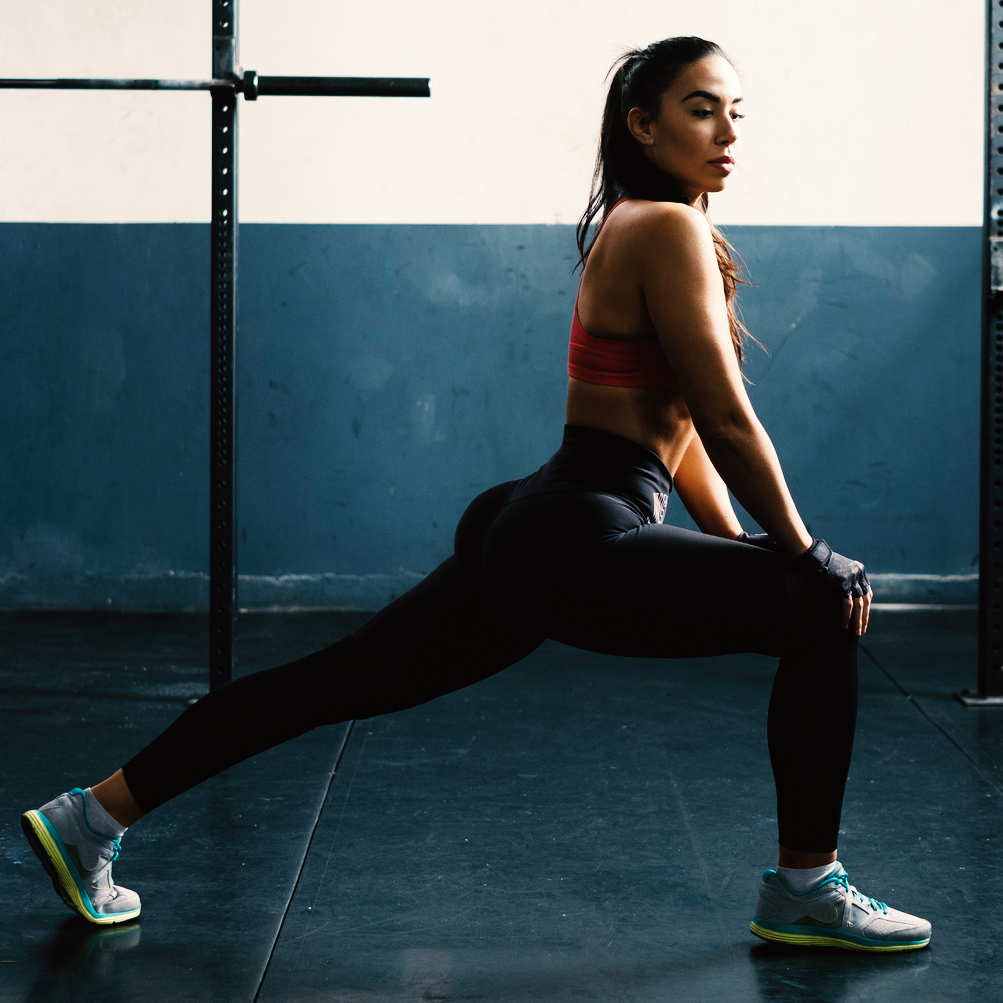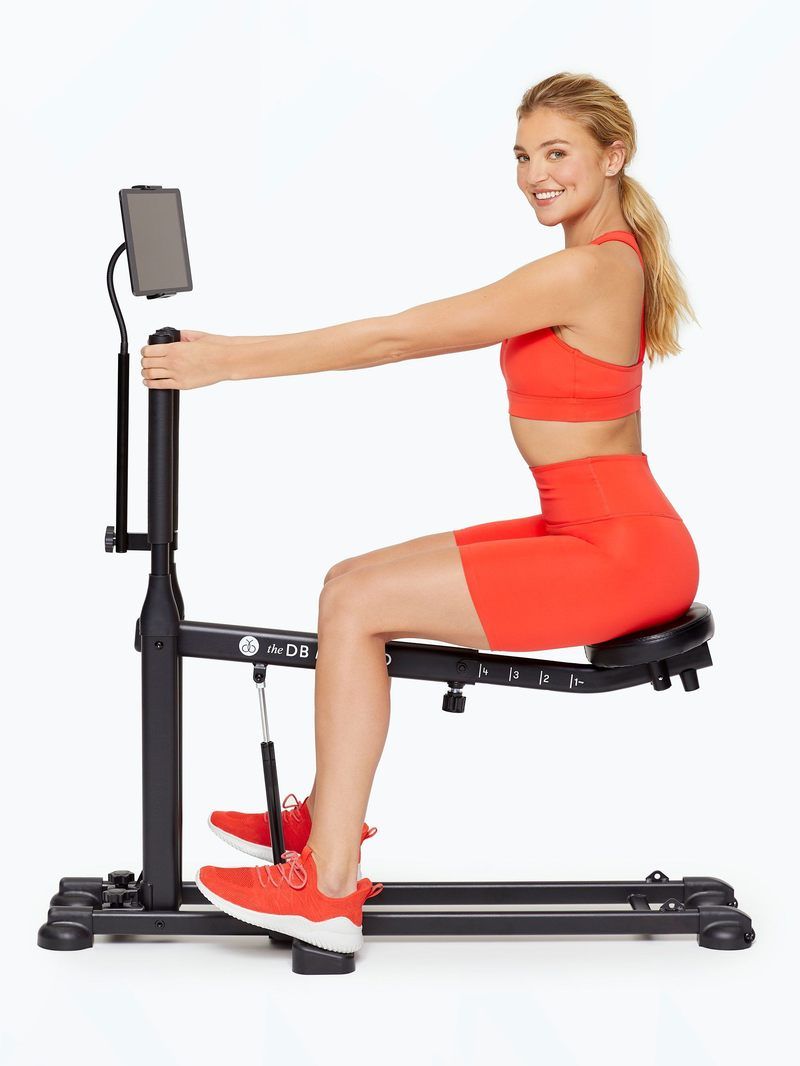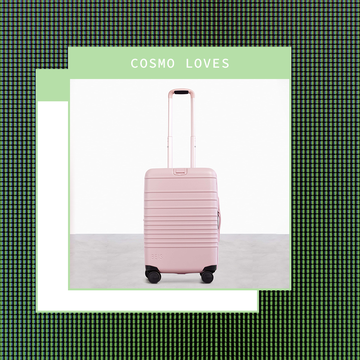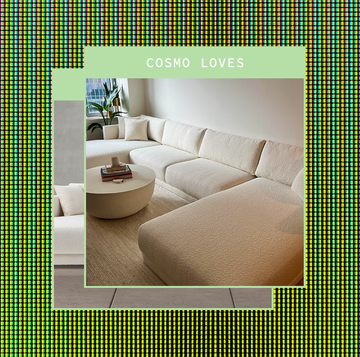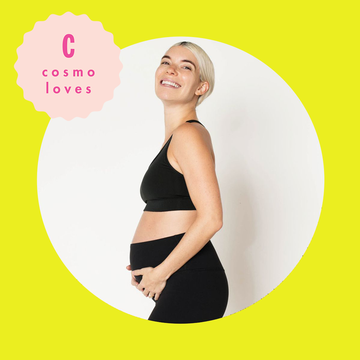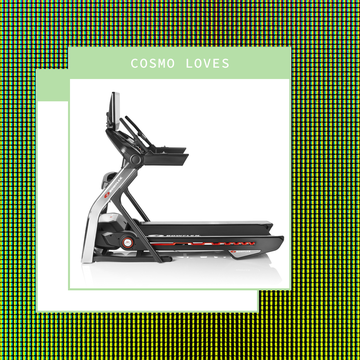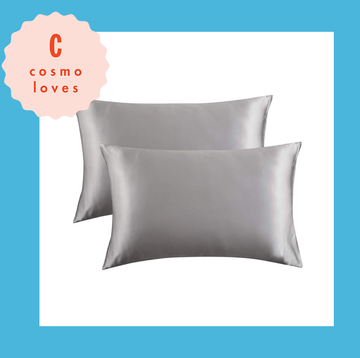Okay, by show of hands, who has actually entered a gym facility in the past two years?! Certainly not when you can roll out of bed and work out right there in your living room while the pup you got during quarantine watches. At-home workouts were at one point our only option (remember when Amazon was literally completely sold out of dumbbells?) but now that we all have our cozy home gyms set up, idk, I kinda don't wanna go back to the gym.
Which leads us to the necessary at-home workout equipment for a total-body experience. If you were gonna invest in a gym membership, you might as well invest in a machine that will help you build the same amount of strength that you would in the gym. And if you wanna target the glute region? Get ready to feel the burn of The DB Method machine. It pretty much blew up when Kim K gifted it to her entire fam, and then Khloe posted about it on IG as a home-gym *must-have*. The machine has been spotted in Hailey Bieber's and Tracey Ellis Ross' homes, too.
All that said, when my coworker asked me to try out the at-home squat machine designed to give you a super strong Dream Butt (and quads!), I was very down to play guinea pig—particularly since I wouldn't have to leave my apartment to use it.
How does it work?
To use the machine the right way, it's all about alignment. First, your heels should be the part of your foot touching the foot ramps, with your toes hanging off, explains Aliyah Sims, CPT, a NASM-certified personal trainer with The DB Method, Rumble, and Equinox Plus. "Shimmy your booty back onto your seat guide, tuck the tailbone, and engage that core. Your core is your support, not the handrails, so grip lightly," she says. Noted. It's also important to keep your shoulders down to eliminate tension when the squatting gets tough, and your chest upright (no hunching forward!), adds Sims.
Unlike typical air squats, the device provides resistance—but it also guides your butt so that you don't fall back. By elevating your toes and giving you something to hold on to, your weight is shifted from your quads to your butt so your glutes can take over. Even better: Compared to regular squats, this modified version of the movement puts less pressure on your knees and back to reduce the risk of strains, all according to the machine's makers.
The basic rundown of the DB Method workouts is a mix of glute activation to wake up those muscles, then full squats to warm you up and set your proper form, and some "low zone," "mid-zone," and "high zone" pulses. "Once your foundation is set, you have the option to quicken your pace...or add extra resistance with our DreamBands resistance bands or The DreamBelt weighted belt," Sims says. "You'll notice a theme of repetition and consistency in our workouts, because they matter when your main goal is *progress*."
But don't worry—you don't have to come up with this whole routine on your own. With the $329 you pay for the DB Method machine (we told you it was an investment), you also get a month of premium access to workouts from certified trainers on the DB Method app plus The DreamMount phone and tablet holder so you can actually see what you're doing while you're squatting, instead of propping your phone somewhere else in the room and trying to listen.
I committed to using the machine for 10 minutes a day for a month to truly assess whether it works. For guidance and to keep things interesting, every day, I alternated between doing two loops of the "Founder Fave" video, and "Cardio Sculpt."
The Pros
It's a full-body workout.
Regular old squats are pretty much all about your lower body muscles. But because of the way the DB Method is designed, and the way you have to keep your posture aligned while you're in the middle of those squats and holding onto the handles, you're working many more muscle groups. "You are able to use your seat guide and the resistance it provides to work your core, biceps, triceps, chest, and posterior chain, too," says Sims.
The exercises are basic enough for beginners.
You definitely don't have to be some kind of squat fanatic to be good at The DB Method. In fact, skill isn't a requirement at all. If you can sit on the seat, bend your knees, and extend your legs to stand up, you can do it. It's easy! Really!
I'll admit, though, that some moves were definitely more challenging than others. For instance, the "low zone" pulses in the "Founder Fave" video were, at times, excruciating. But the hurdle—working through that super intense burn—was more of a mental thing than a physical one, for me, at least.
The burn is super real.
The best part about this machine is that it offers different degrees of resistance depending on the squat movement you're doing: Sinking deep into a full-range squat is much harder than doing a bunch of pulses at the top of the movement. Compared to basic air squats, I felt like the machine worked new and different muscles. As much as I yelped in pain while using it, I found the burn comforting because it reassured me the exercises were working. What's more, following the videos definitely pushed me to try a variety of squat movements, whereas when I'm left to my own devices at the gym, I don't get particularly creative.
10 minutes a day is very doable.
I would never commit to a 30-day challenge that required me to exercise longer than this. That sounds hard! And while some people might commit to longer spurts on the machine—and have time to listen to a full podcast or watch an entire episode of Friends while they're at—my 10-minute commitment didn't affect my wakeup schedule or my social life and felt feasible, even on days when I woke up with a hangover.
It's easy to stow.
I do not live in an apartment where I have the space to display my exercise equipment—and even if I did, the machine doesn't really go with my mid-century modern decor and succulent collection. (I! Am! A! Millennial!). I loved that device was both easy to assemble and that all I had to do was loosen two screws to fold it flat for convenient storage under my bed.
I should also mention that the machine has wheels so you can roll it from its storage spot to in front of the TV wherever you like to set it up.
The Cons
It leaves you H-U-R-T-I-N-G.
During the first few days of the challenge, I was crazy sore. Every time I went up or down the stairs, I thought I might keel over, and getting in and out of chairs was difficult, too. Luckily, about a week and a half into the challenge, my body became more accustomed to the movements: I felt less sore (and a bit stronger!) every day. Still, if you hate the sensation of your glutes working extremely hard, then you will not like this machine!
It can get a little boring.
By the end of the 30-day experiment, the movements became monotonous. And, frankly, I was over it. That said, it was less about the workout itself—the 10 minutes typically went by pretty quickly—and more about having to do squats every single day. I have a very short attention span when it comes to fitness.
The verdict?
Well, I know something changed, because I was able to ascend stairs without being in extreme pain by the end of this challenge. So I think that means my glutes, calf muscles, and quads were quite a bit stronger, which was the goal.
Okay, okay, so the truth is that I went from doing 30 squats with a 17-ish-pound kettlebell *maaaaybe* twice a week to doing nonstop squats for 10 minutes every single day. And I suppose there's no way to know whether my muscles would have felt any different had I amped things up on my own at the gym without the help of the machine. But that would involve actually making to the gym of course, so I'll take this living room option any day.
As the executive digital editor of Cosmopolitan, Rosa Heyman leads the digital operations for the largest women’s lifestyle brand in the U.S. and oversees a team of whip-smart editors and hilarious writers who bring you some of the best stuff on the internet. Rosa’s background is in social media and content strategy, and she’s spoken as an expert on panels for Facebook, Instagram, Social Media Week, and Her Campus. She previously held roles at Marie Claire and People magazine.

